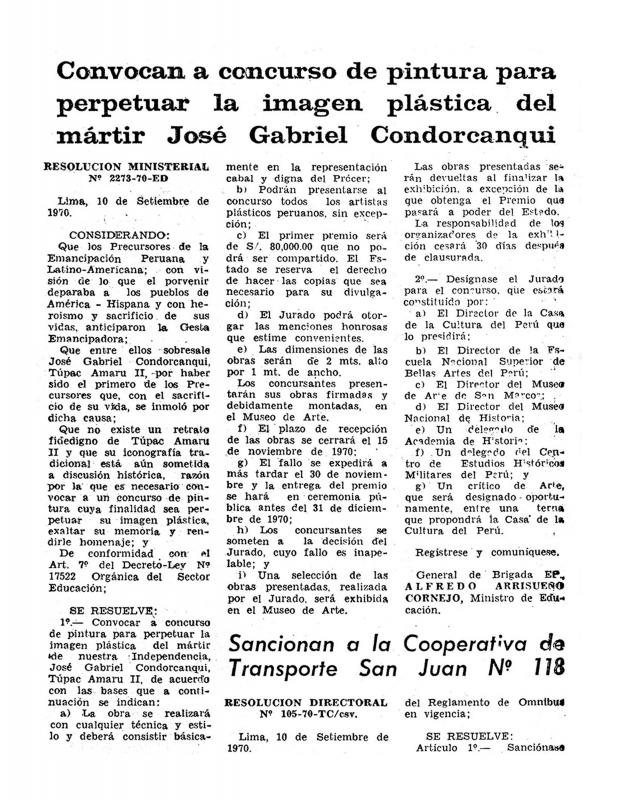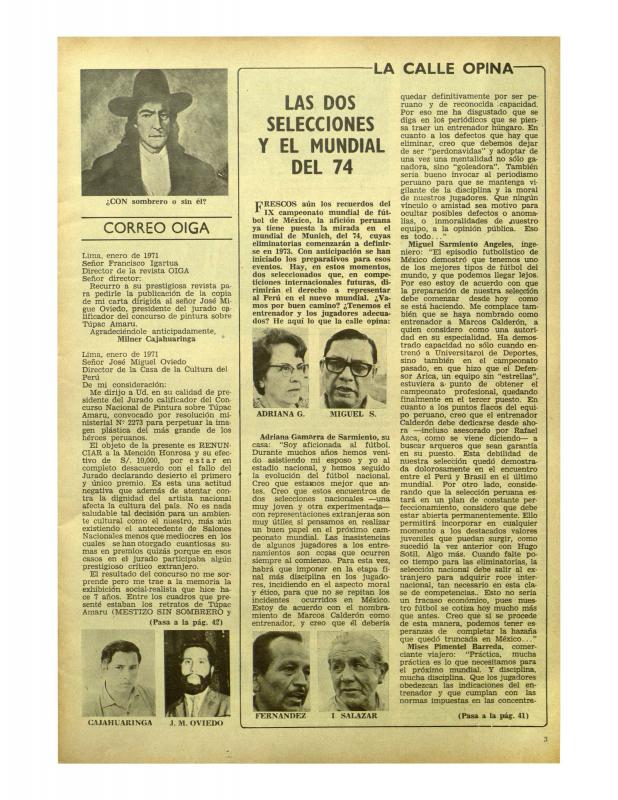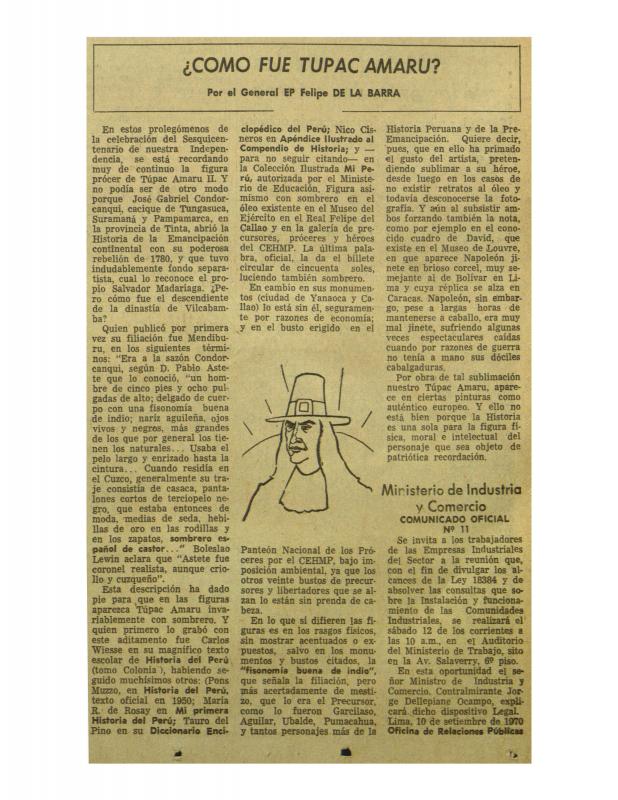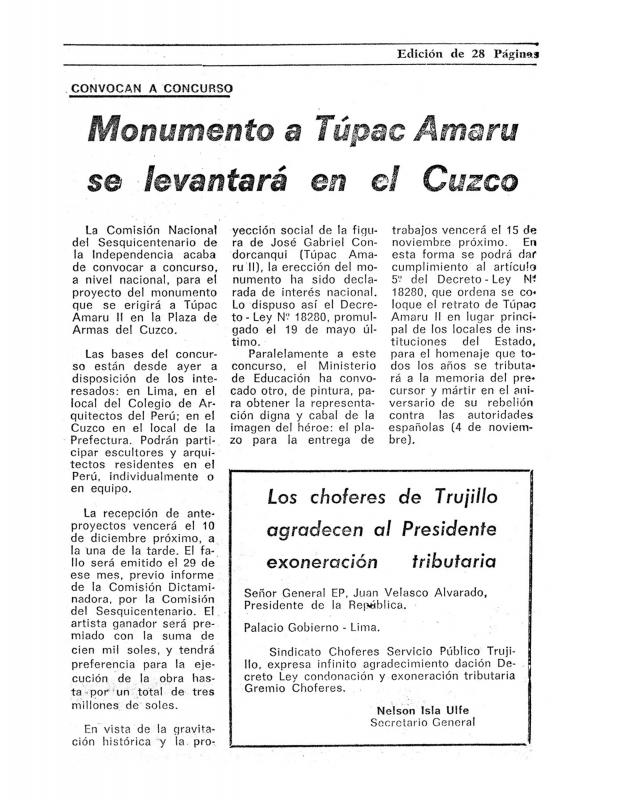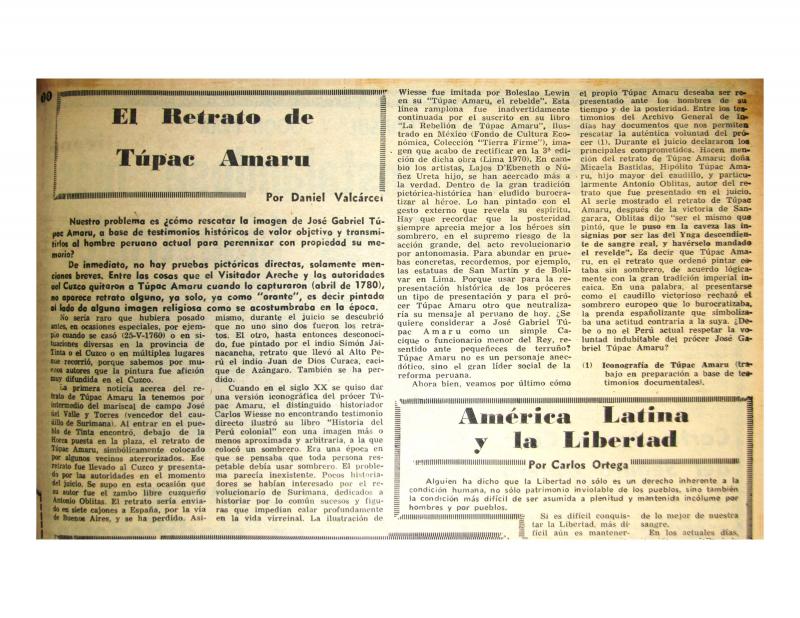The members of the jury of the Concurso Nacional de Pintura [National Painting Contest] were José Miguel Oviedo, director of the Casa de la Cultura; Juan Manuel Ugarte Eléspuru, director of the Escuela Nacional de Bellas Artes; Francisco Stastny, director of the Museo de Arte y de Historia of the Universidad de San Marcos; Franklin Pease, director of the Museo Nacional de Historia; Guillermo Lohmann, president of the Academia de Historia; Felipe de la Barra, president of the Centro de Estudios Histórico Militares; and Adolfo Winternitz, director of the Escuela de Artes Plásticas of the Pontificia Universidad Católica del Perú. The resolution issued by the Ministry of Education was signed by Major General EP Alfredo Arrisueño Cornejo, minister of education at the time.
José Gabriel Condorcanqui, Túpac Amaru II (1738–81), was a curaca or chief of Incan descent who, in 1780, led the most important Andean uprising against the Spanish empire. Largely ignored by traditional Spanish-American historiography, his figure was the emblem of the so-called Gobierno Revolucionario de las Fuerzas Armadas during its first (1968–75) period, which was characterized by social reform and by an interest in symbolic representation. The lack of portraits from the lifetime of the indigenous leader led to the organization of this competition [on that subject, see in the ICAA digital archive by Alfredo Arrisueño Cornejo “Convocan a concurso de pintura para perpetuar la imagen plástica del mártir José Gabriel Condorcanqui” (doc. no. 865422)], whose jury included leaders of almost all the art institutions in Peru. The polemic nature of the competition was heightened by the dramatic decision not to award any of the works submitted. Milner Cajahuaringa (1932–2017), one of the four painters awarded an honorable mention, decided to publicly renounce the recognition [see “Carta de renuncia a la Mención Honrosa otorgada en el Concurso de Pintura Nacional sobre Túpac Amaru” (doc. no. 1141759)]. A second competition was proposed, however, it was never held.
[For further reading on Túpac Amaru II, see the following articles in the archive: by General EP Felipe de la Barra “¿Cómo fue Túpac Amaru?” (doc. no. 865441); (unsigned) “Convocan a concurso: monumento a Túpac Amaru se levantará en el Cuzco” (doc. no. 1053438); (unsigned) “En busca de la imagen arquetípica de Túpac Amaru” (doc. no. 865702); by Daniel Valcárcel “El retrato de Túpac Amaru” (doc. no. 1052165); and by A. O. Z. “Túpac Amaru: ¿verdadero retrato?” (doc. no. 865460)].

